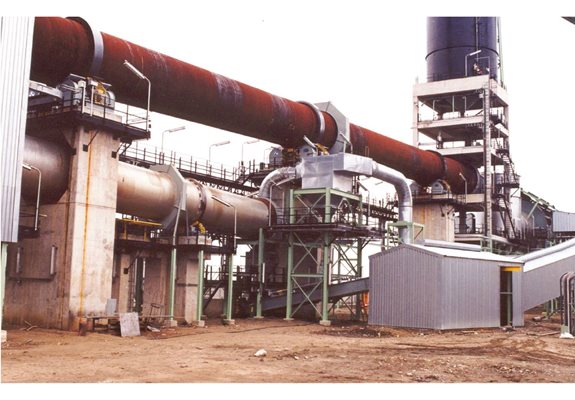Metso is the world’s leading supplier of coke calcining systems and equipment. Metso has designed and supplied more than 50 plants representing approximately 70 percent of the worlds coke calcining capacity.
Basic calcining process
Petroleum coke calcining is a three step process, including drying, devolatization and densification. The coke calcining process is a time-temperature function, conducted in an oxygen deficient atmosphere. Important control variables are heating rate, air addition rate and final calcination temperature. To obtain the calcined coke properties required by the carbon and graphite industries, the coke must be subjected to temperatures of 1150-1350 Deg C or higher to achieve density and conductivity.
The final quality of the calcined coke is directly related to the specific characteristics and quality of the green coke fed to the calciner. While calcination cannot improve upon certain quality limits inherent in the green coke, potential quality can be lost by improper calcining.
How it works
Coke calcining plants can be located in oil refineries, captive plants in aluminum smelters or merchant plants.
Rotary Kiln
The petroleum green coke is fed into a refractory lined rotary kiln where the volatiles are driven off during the calcining process in an oxygen deficient atmosphere. Air can be injected through the kiln shell to burn a portion of the volatile matter in the kiln providing usable heat to the kiln.
Cooling:
Once the calcined coke is discharged from the kiln, the coke is cooled in a rotary cooler. At the feed end of the cooler, water is sprayed on the calcined coke to cool the coke to acceptable temperatures. The water is evaporated in the process.
Afterburner:
The kiln exhaust gas is oxygen deficient and contains volatile matter released in the kiln. The kiln exhaust gas is directed to an afterburner (secondary combustion chamber) and air is injected to burn the volatiles and dust. A waste heat recovery boiler is used to produce steam from the heat contained in the afterburner exhaust gas.
Flexibility in operations
Metso rotary kilns can handle a wide range of green coke feeds including needle, sponge, shot, fluid or tar pitch green cokes. The rotary kiln is also able to optimize the coke calcining operating parameters, be it residence time, temperature gradient, and heat up rate, all of which impact product quality. Coke kilns can be fueled with: gas, heavy oil, oil, refinery gas, waste oil and solid fuel, fired independently or in combination.
Want more information about Metso in Pyro Processing? Check out our brochure!

